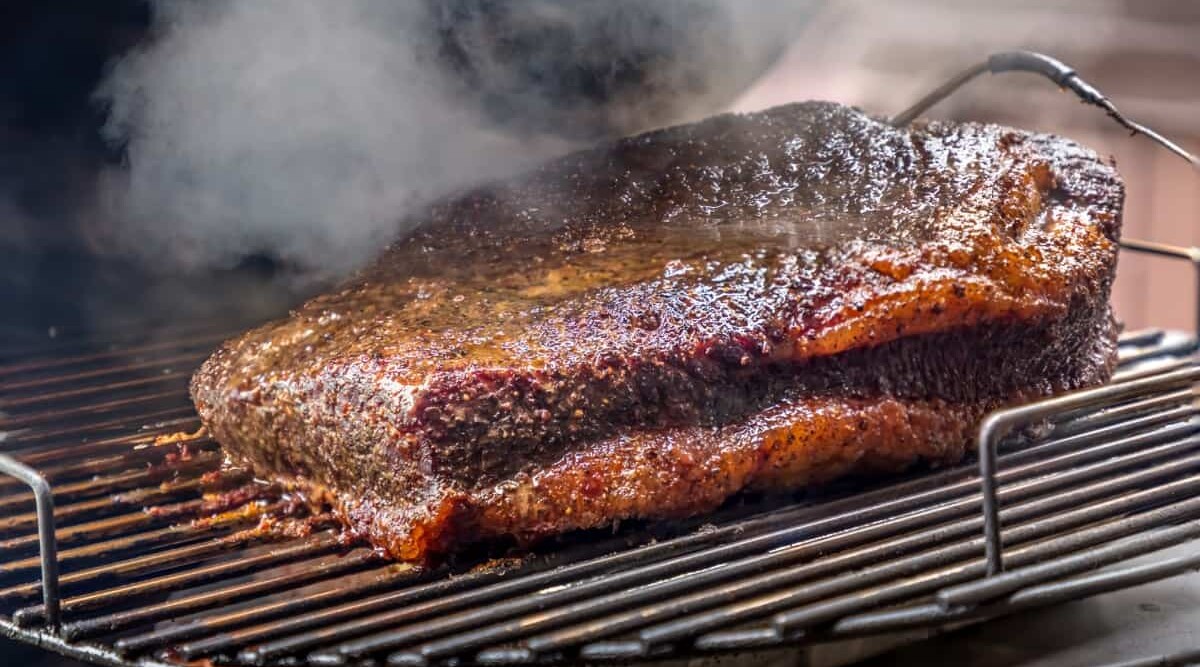
Brisket is a prized cut of beef known for its rich flavor and tender texture when cooked properly. It comes from the breast or lower chest part of the cow, and as seen in our guide to all the different beef cuts, is actually one of the 8 large primals of beef.
Vikings called brisket gristle or cartilage. In Old English, the word is brushk, meaning tough. You can just see a lot of serious gnawing going on, right? Yeah, good times. So historically brisket was not highly valued and was often just used for making ground beef.
But the brisket we know and love today as a favorite BBQ staple is centuries beyond what was served in drafty dining halls, along with tankards of mead and ale. And thankfully so.
This comprehensive guide will take you through everything you need to know about brisket, from its origins on the cow and names of different cuts, to its nutritional info and the best cooking techniques.
So let’s dig in and, along the way, look closely at one of the best transformation stories in the history of meat cooking.
Key Takeaways
- Brisket comes from the cow’s breast or lower chest and is known for its tough connective tissue.
- There are three different cuts of beef brisket: the full packer, the flat, and the point.
- The brisket deckle refers to the fat cap and intermuscular fat that overlays the brisket, not the entire point half of the brisket.
- Brisket has a robust, deep beefy flavor and a tender, melt-in-your-mouth texture when cooked properly.
- Brisket is best used for low and slow smoked Texas-style, corned beef, and pastrami.
- When planning to serve brisket, estimate about 40-50% shrinkage during cooking and plan for ½ to ¾ pound of raw brisket per person.
- Brisket can be cooked in a smoker, oven, or sous vide for different results.
- Brisket has transformed from a tough cut to a beloved BBQ staple.
Jump to:
- 1 Key Takeaways
- 2 What is Brisket? What Part of the Cow Does it Come From?
- 3 The Three Different Cuts of Beef Brisket
- 4 What is the Brisket Deckle?
- 5 Brisket Flavor, Texture, Fat Content, and Tenderness
- 6 What is Brisket Best Used For?
- 7 How Much Brisket Do You Need Person?
- 8 Brisket Nutritional Info
- 9 The Many Ways to Bring Out the Best in Brisket
- 10 Where to Buy Brisket
- 11 Brisket — Tough No More
What is Brisket? What Part of the Cow Does it Come From?
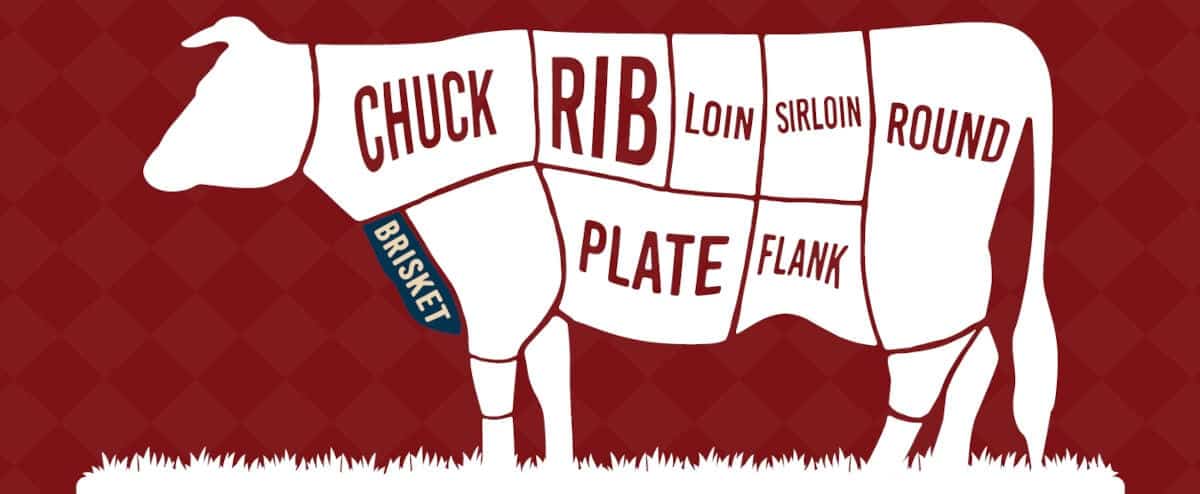
A brisket is a cut of beef originating from the cow’s breast or lower chest. This area, located just above the front legs, is significant for bearing much of the animal’s weight, which results in a dense composition of connective tissue within the meat.
Cattle don’t have collarbones to help support the body’s weight, so these pectoral muscles are all that’s keeping the front half of a 1,200 to 1,400-pound animal off the ground. Supporting about 60 percent of the animal’s weight requires dense and tough muscle, which is why it consists mostly of connective tissue.
The brisket consists of two primary muscles: the deeper pectoralis profundus and the superficial pectoralis superficialis, which are separated by a layer of fat. This fat and connective tissue contribute to the brisket’s characteristic toughness when raw, making it ideal for slow-cooking methods.
When cooked properly, typically through smoking, braising, or slow-roasting, the brisket transforms into a tender, flavorful dish with a rich, succulent texture.
Its popularity in barbecue, particularly in Texas-style cuisine, is due to its ability to absorb flavors and become incredibly tender over extended cooking periods.
You can see where the brisket comes from on the cow and many tips and tricks from the pros on how to prepare and cook a brisket in the following video from Jess Pryles:
The Three Different Cuts of Beef Brisket
Brisket is supplied as 3 different cuts, namely the full packer, the flat, and the point. Let’s briefly look at each:
Full Packer
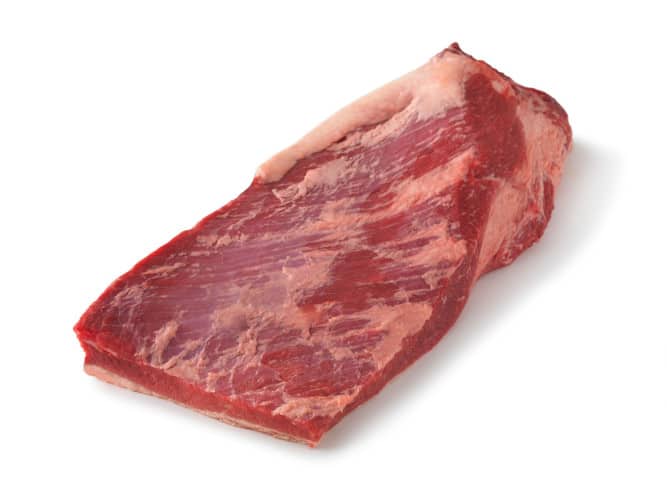
A full packer brisket is the whole brisket cut, made up of the two different muscles combined that are the Flat and the Point separated by a layer of fat. It weighs between 8 and 20 pounds. A layer of fat covers the top; this fat cap should be trimmed to ¼ to 1 inches before cooking.
The Flat
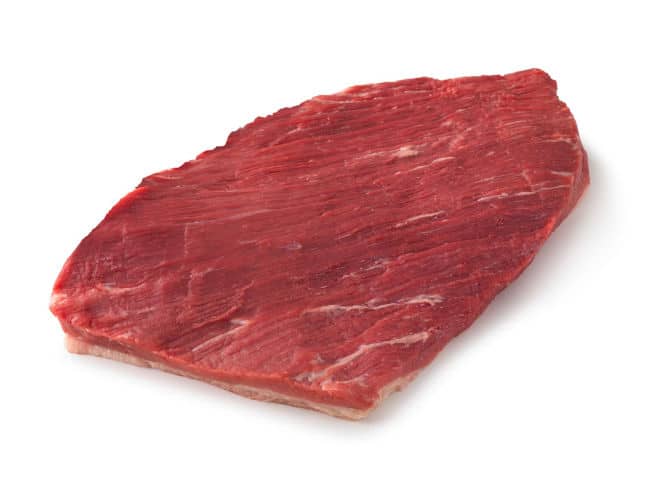
This is the main part of the brisket. Also known as the first or flat cut or the deep pectoral, it lies toward the inside the cow, against the ribs. Being worked the most, it is lean, or low on fat content. It’s typically used for corned beef and pastrami.
The Point
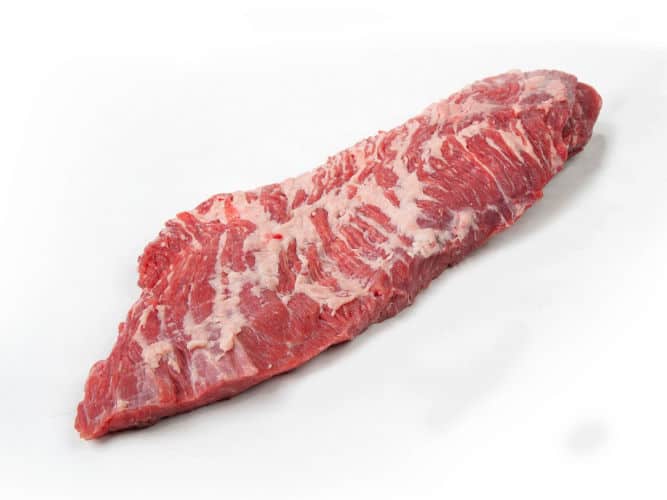
This is the lower portion which sits ‘outside’ above the leg, it is the superficial pectoral. Also called the fat end or second, point, or triangular cut. It’s typically used to make beef burnt ends.
What is the Brisket Deckle?
The brisket deckle is often a source of confusion due to varying definitions. The confusion around the term “deckle” arises from regional butchery terms and the evolution of culinary language.
In traditional butchery, the “deckle” refers to the fat cap and intermuscular fat that overlays the brisket, especially over the pectoralis profundus (the deeper muscle of the brisket). This part is characterized by a significant amount of fat and connective tissue.
However, a common misconception is using “deckle” to refer to the entire point half of the brisket. The brisket is typically divided into two main sections: the flat (leaner part) and the point (fattier part). The point is sometimes colloquially called the “deckle,” although this is not anatomically correct.
So in strict terms, the point includes the deckle (the fat cap and layer between the point and flat), but is not limited to it.
Brisket Flavor, Texture, Fat Content, and Tenderness
Overall, brisket’s appeal lies in its transformation from a tough cut into a dish renowned for its distinctive flavor, texture, fat content, and tenderness.
Brisket is known for its robust, deep beefy, savory flavor with a richness that comes from the combination of the meat itself, rendered down fats and connective tissues, and added flavors from seasonings and wood smoke.
The texture of brisket is unique due to its dense connective tissue. When raw, it’s quite tough. However, when cooked slowly over low heat for many hours, the connective tissues break down, resulting in a tender, melt-in-your-mouth texture. The fattier brisket’s point end often yields a softer, more moist texture compared to the leaner flat end.
The fat content in brisket varies between its two main parts: the flat and the point. The flat is leaner with a minimal fat cap on one side, while the point contains more intramuscular fat and a thicker fat cap. This fat is crucial for keeping the brisket moist during the long cooking process and contributes significantly to its flavor profile.
Achieving tenderness in brisket is all about the cooking process. Due to its tough nature, brisket requires a lengthy cooking time at low temperatures. This slow cooking process allows the tough connective tissues to break down, transforming the brisket into a tender and juicy cut of meat.
What is Brisket Best Used For?
The three main uses for brisket are low and slow smoked Texas-style, corned beef, and pastrami. Let’s take a brief look at each.
Smoked Low and Slow, Sliced and Then Eaten
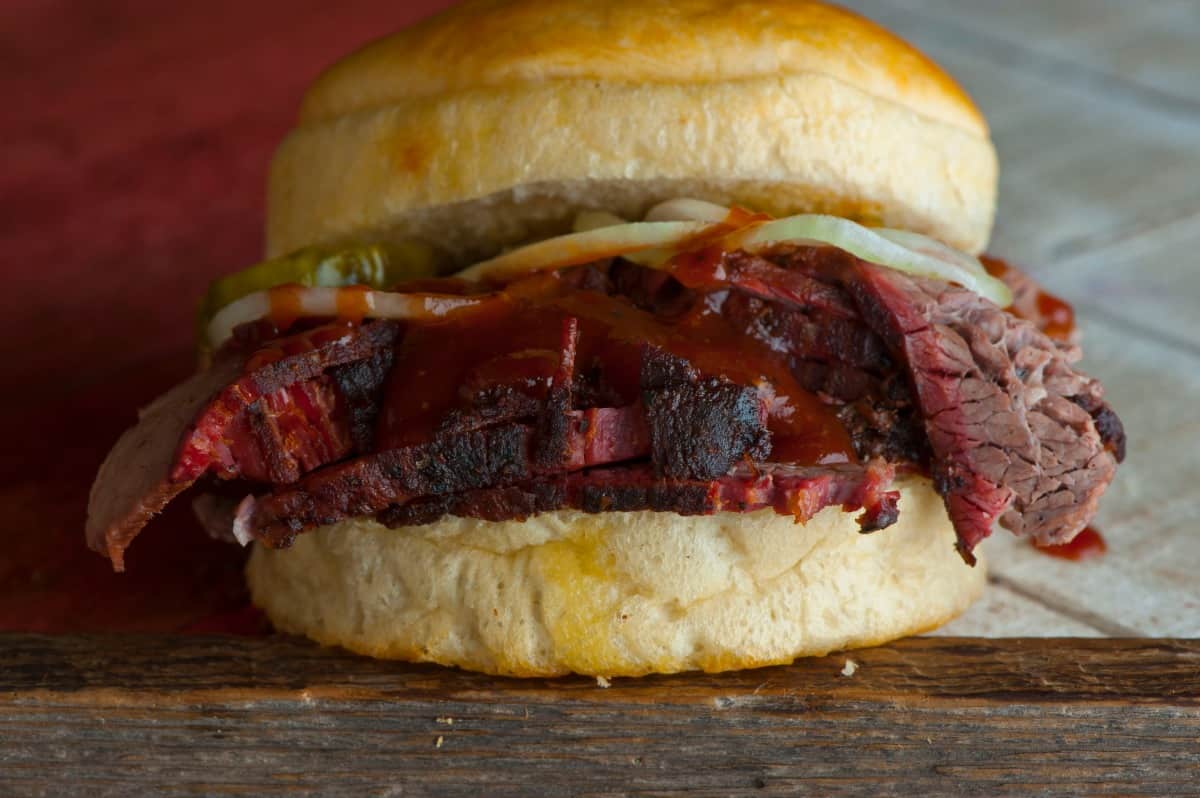
Texas-style low and slow smoked brisket is a classic barbecue dish characterized by its simple seasoning and prolonged smoking process.
Typically, the brisket is seasoned with just salt and black pepper, emphasizing and allowing the meat’s natural flavors to shine through.
It’s then smoked at low temperatures of around 225-250 °F for many hours until an internal temperature of about 203 °F, allowing the meat to absorb the smoky flavors and the tough connective tissues to break down slowly.
This results in a tender, juicy brisket with a rich, smoky flavor and a distinctive pink smoke ring just beneath the crust, known as the bark.
The simplicity of the seasoning and the slow, careful cooking process are hallmarks of this Texas barbecue tradition.
Corned Beef
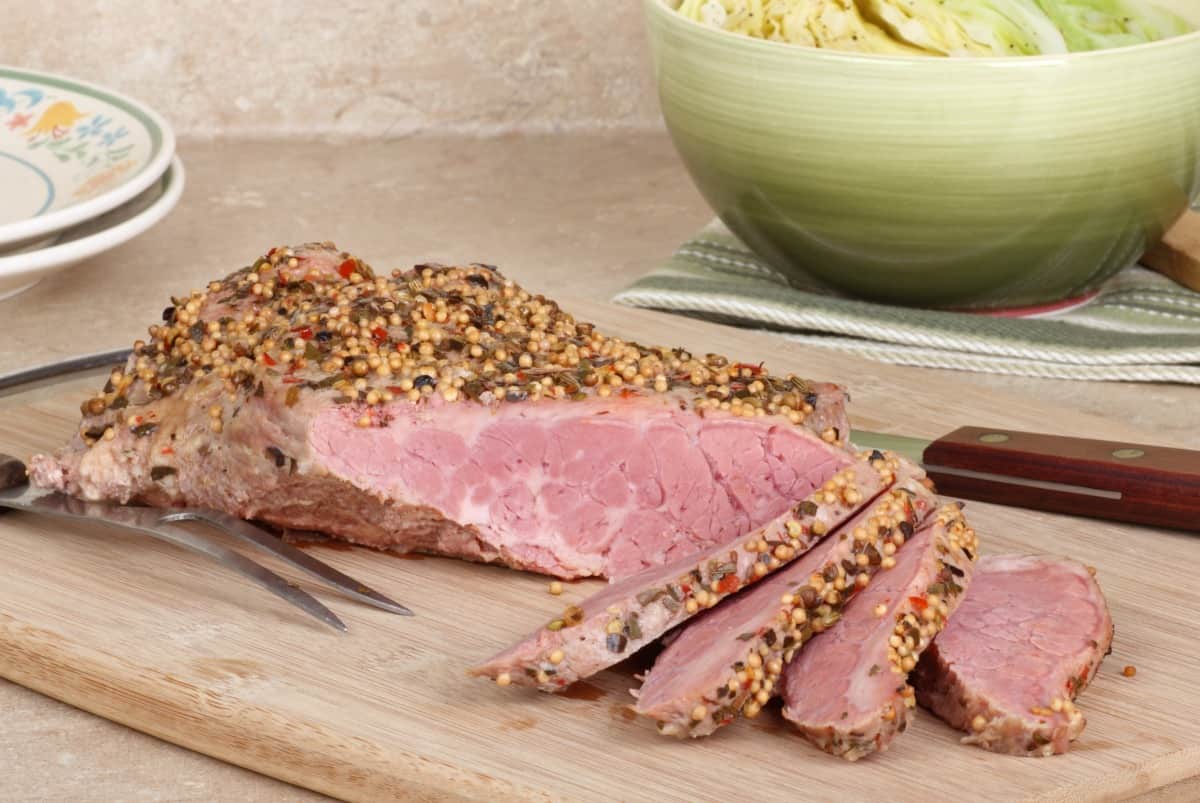
Corned beef is a famous dish made from beef brisket where a layer of coarse rock salt looks more like grains or seeds than teeny crystals issuing from a nearby salt shaker.
Sometime back in 1570 or 1580 AD came the first recorded use of the word “corned” used to describe meat being preserved in a bath of salt.
The term “corned” comes from using large grains of rock salt, also known as “corns” of salt, in the curing process. The process involves soaking the beef in a brine solution, which typically includes water, salt, sugar, and various spices. Today we call it wet brining, or curing. This brine cures the meat, giving corned beef its distinctive savory, slightly tangy flavor and pink color.
Pastrami
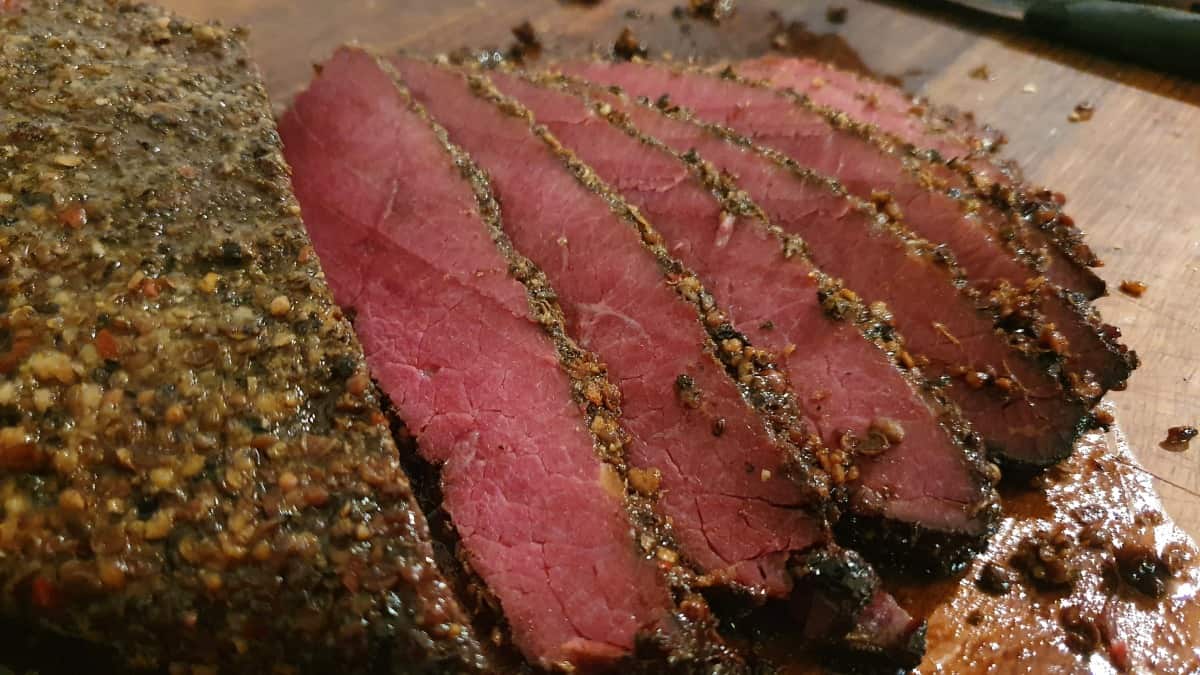
“Beyond the brine lies the smokehouse” could be the subtitle for The Story of Pastrami.
The name comes from the Romanian word pastrami taken from pǎstra, which means to preserve. This delicatessen staple takes the dry preservation route of a salt and spice cure followed by a stint in the smoker.
The trademark pink color comes from the curing salt. This one also deserves its own article, so more on this later.
How Much Brisket Do You Need Person?
When planning to serve brisket, it’s important to consider the amount of raw meat you’ll need per person, the expected shrinkage during cooking, and the resulting amount of cooked meat.
Brisket typically shrinks by about 40% to 50% during cooking due to the loss of moisture and the rendering of fat. So, as a general guideline, start with about ½ to ¾ pound (about 225 to 340 grams) of raw brisket per person.
After cooking and shrinkage, you can expect to serve about ⅓ to ½ pounds (about 150 to 225 grams) of cooked brisket per person. This amount is generally satisfying for most guests, especially when accompanied by sides.
Remember, these are estimates only, and actual needs can vary based on the specific cut of brisket, the appetite of your guests, and the number of side dishes served.
Brisket Nutritional Info
| Nutrition | Based on 100g of brisket |
|---|---|
| Calories | 287 |
| Total Fat | 18.7g |
| Saturated Fat | 7.2g |
| Cholesterol | 105mg |
| Sodium | 48mg |
| Protein | 28g |
| Calcium | 16mg |
| Iron | 2.5mg |
| Potassium | 230mg |
The Many Ways to Bring Out the Best in Brisket
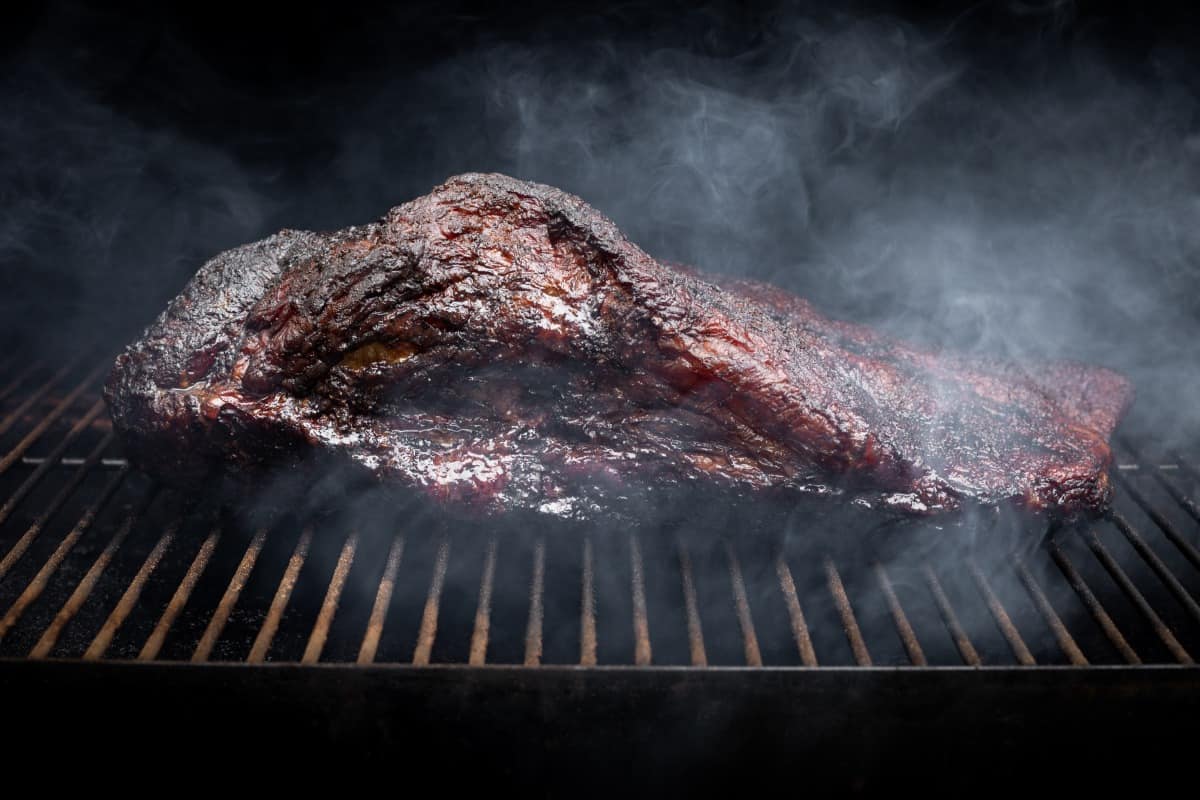
Brisket in the Smoker
We discuss smoking brisket at length elsewhere, so, for now, we’ll just say that the process of seasoning with a dry rub and or a brisket injection, smoking it low and slow for 1 to 1 ½ hours per-pound at 250 °F, and then slicing brisket correctly leads to wonderful results.
Brisket in the Oven
Pot roast is another cultural favorite rendering of brisket. Quality time in the oven or slow cooker with carrots, onions, and — okay, I’ll stop drooling if you will.
Another cultural favorite, Betty Crocker, recommends for a 2½ to 4-pounder, roasting for 2½ to 3 hours covered in liquid at 325 °F until the internal temperature reaches 135° F. For a well-done brisket, carryover cooking should bring the heat up to 170° within 15 minutes.
Brisket the Sous Vide Way
A water bath at 131 to 133° F for 2 to 3 days melts the collagen into gelatin, creating a tender roast.
Clint Caldwell of AmazingRibs.com explains the brisket will shrink by at least 40 percent in this cooking process.
After seasoning, the meat is placed into a heavy plastic bag and then vacuum-sealed. The airtight package goes into the water-filled sous vide cooker where the low, steady temperature gently cooks the meat, turning it pink. It can be served to the table straight from the cooker, but some will put a crust on it by searing it in a dry skillet on the stove or under the broiler for a few minutes.
Clint explains how to create smoked sous vide brisket, a true study in patience: After trimming, dry brine the cut for 12 to 24 hours, sous-vided for 30 hours, and then rapidly chilled in a 50/50 ice-water bath for a mere 30 minutes. At this point, it can be frozen or refrigerated until grill time.
Then, a 2-zone grill or smoker is fired up, the brisket leaves its plastic pouch and goes on the grate to be smoked for an hour at 225° F. Strain the juice in the bag to create an awesome sauce. And then, it’s done.
Where to Buy Brisket
Snake River Farms
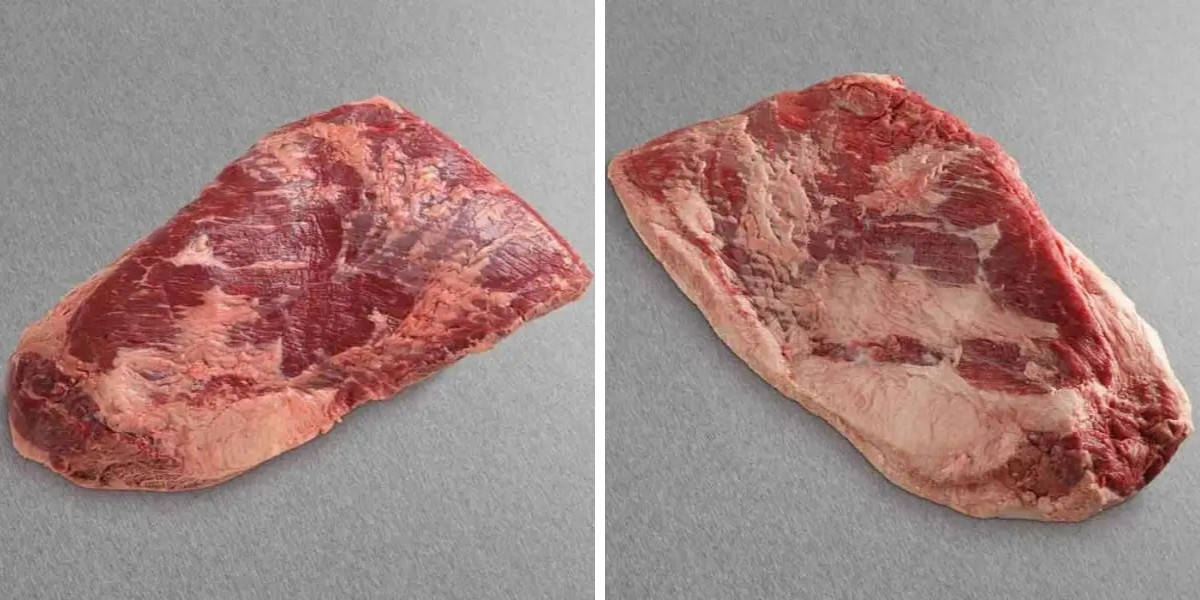
Brisket is available in two tiers at Snake River Farms:
- American Black Grade Wagyu
- American Gold Grade Wagyu
The marbling score of black grade briskets is greater than that of USDA Prime. This Wagyu cross beef is raised in the Pacific Northwest’s temperate climate, resulting in briskets with naturally rich marbling and exceptional flavor.
Snake River Farms’ Gold Grade briskets are their most premium line, with more intramuscular fat and marbling than their Black Grade briskets. So you can expect them to be rich and buttery, with a tonne of deep umami beef taste.
Briskets from Snake River Farms range in weight from 9-12 lbs to 20+ lbs.
Check Price on Snake River Farms
Porter Road
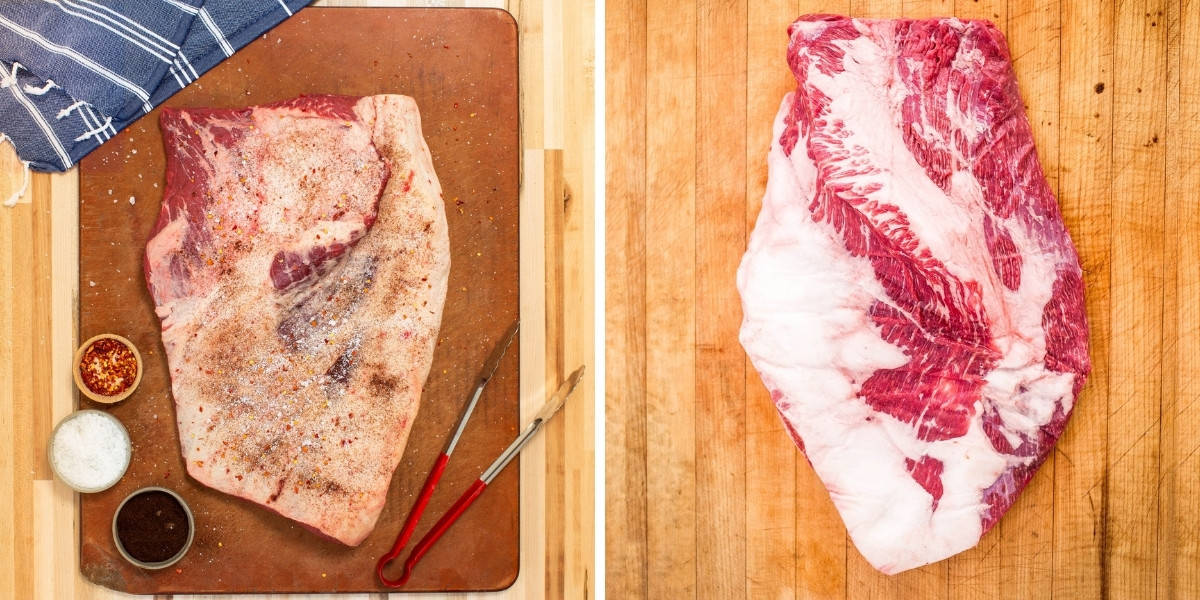
‘Packer brisket’ and ‘whole brisket’ are the two varieties of brisket available at Porter Road.
Their packer briskets weigh 13.5 to 14.5 pounds, whereas their whole briskets weigh between 8 and 10 pounds.
I’m not sure why they have different names as they are both ‘whole brisket,’ but they do have different weights and come from different farms.
Both briskets are richly marbled and tasty, so they won’t let you down. Porter Road’s briskets are delivered frozen to keep them fresh.
Brisket — Tough No More
The picture painted of beef’s toughest muscle group is no longer the gray-tinted, cold and windy scenario of tough customers relentlessly gnawing on tough, leathery meat. Oh, no. The picture is warm — the blue smoke, the pink of a smoke ring, and the deep brown of an awesome crust.
Brisket is the whole point of having a smoker, some would say. In its many forms — pastrami, corned beef, or pot roast — it has staked a permanent place on the American menu. Tried and true recipes can make way for the inventive.
We hope you enjoyed your journey through beef brisket history and will share it with others. If you have a favorite recipe, please share and encourage more of this wonderful cut at the table.
Happy grilling!


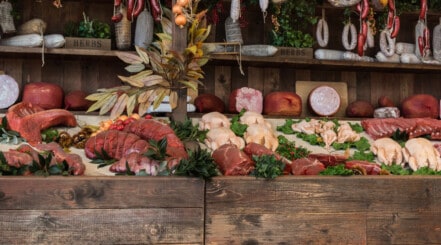
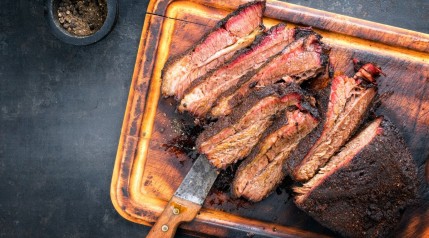
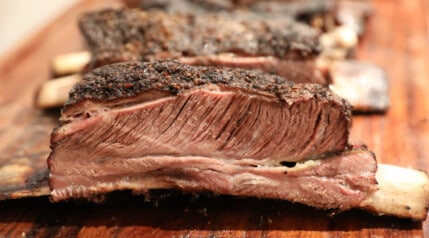
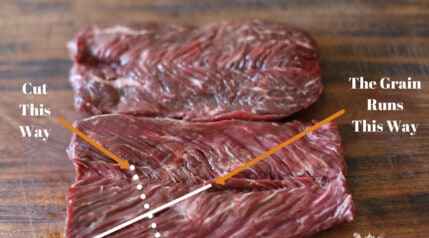
Speaking of toughness, I want to use the one I have in a jigs stew. How do I keep it tender, instead of turning to shoe leather?
By braising it for a long time. To make tough cuts tender, it’s a function of both time and temp. The longer you cook it, the more tender it will become.
I pray this turns out well, I trimmed a little too much fat off I think, but we will see thanks for the info I am new to the world of brisket